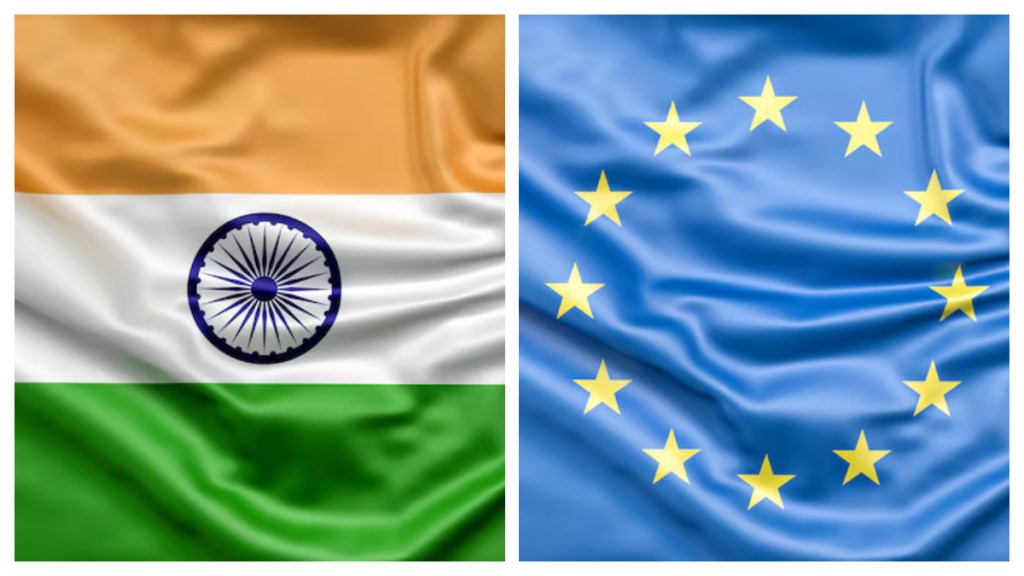India and the European Union on Friday decided to conclude their much-awaited Free Trade Agreement (FTA) by the end of 2025, and finalised a blueprint for increased collaboration in broad range of areas such as trade, mobility, technology and investment.
“We have directed our teams to conclude a mutually beneficial Bilateral Free Trade Agreement by the end of this year,” Prime Minister Narendra Modi said after the delegation level talks with the President of European Commission Ursula von der Leyen and European College of Commissioners here.
India and EU resumed negotiations on FTA in 2022 and since then, nine rounds of negotiations have been held between officials of both sides. The 10th round of talks are scheduled for March 10-14 in Brussels.Both sides first made an attempt for an FTA in 2007 and that effort was abandoned in 2017 as UK went out of EU.
As an economic bloc, the EU is just behind the US in importance as a trading partner, even though China is second in terms of two-way trade with Delhi having a huge trade deficit with the neighbour.
India’s trade in goods with the EU was $ 137.41 billion in 2023-24 with exports at $ 75.9 billion and imports at $ 61.4 billion. Trade in services in 2023 was estimated at US$ 51.45 billion
Along with the FTA, India and EU are also negotiating agreements on investment protection and geographical indications (GI).
India-EU FTA will be the largest deal of its kind anywhere in the world, von der Leyen said. “I am aware it would not be easy but I also know that the timing and determination counts and this partnership comes at the right moment for the two of us,” she said in her address at an event before the delegation level talks. “Now more than ever geo-political context calls for decisive action.”
Both the EU and India face threat of higher import duties from the US, their most important trading partner. Apart from trade, the EU and US are at loggerheads politically. US President Donald Trump has gone to the extent of saying that “the EU was formed to screw the US”. Both sides are also at conflict on the question of resolution of conflict in Ukraine and relationship with Russia.
“Now is the time to step up our security and defence cooperation on land, sea, space, cyber security, maritime security, protecting undersea data cables and explore expanding joint naval exercises,” von der Leyen said. She also said that India and EU can also be partners as they seek to diversify the defence supplies.
“Today, we have decided to create a bold and ambitious roadmap for the India-EU partnership for the period beyond 2025. It will be launched during the next India-EU Summit,” Modi said. The India-EU Strategic Roadmap adopted in 2020 is for five years.
On the mobility agreement the commission president said that India can help close the talent gap and help Europe maintain its competitiveness. “Let us increase student and skilled worker exchange and share expertise, talent and experience.”
India and EU also agreed on increasing cooperation in semiconductors, Artificial IntelligenceI, high performance computing, 6G and initiating a space dialogue.
The EC President said that AI will be at the heart of the strategic agenda and cooperation between Europe AI and India’s AI mission should be deepened and applied in the areas of natural hazards, climate change and bioinformatics.
Both sides also agreed to strengthen the cooperation in semiconductor research and development and manufacturing. Both sides will also launch a joint task force for green hydrogen. On connectivity Modi said concrete steps will be taken, to take forward the India – Middle East – Europe Economic Corridor or “IMEEC”.
India and EU will also consider aligning and aiming at interoperability of their Digital Public Infrastructure (DPI). “India’s Adhar and EU digital wallet can offer private and public services to nearly 2 billion citizens from both sides,” von der Leyen said.

